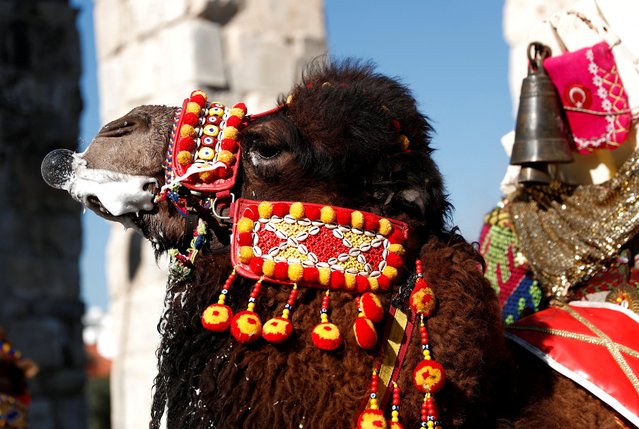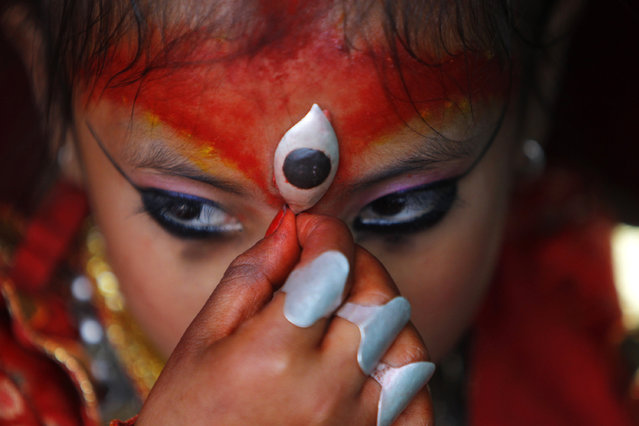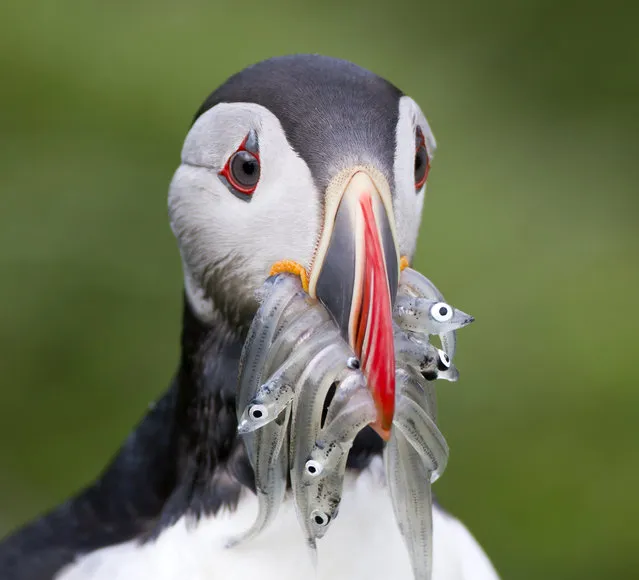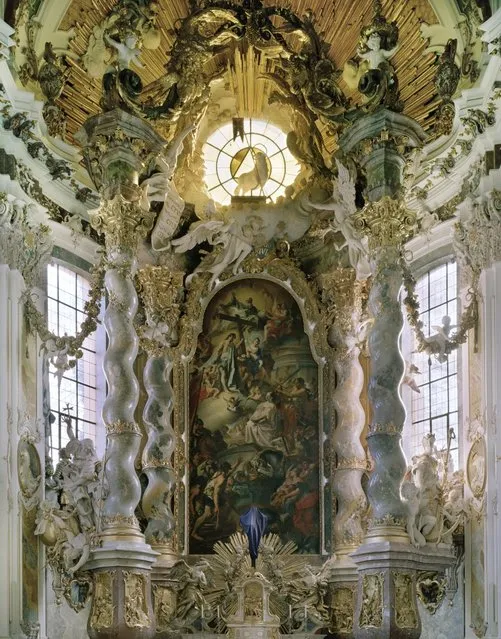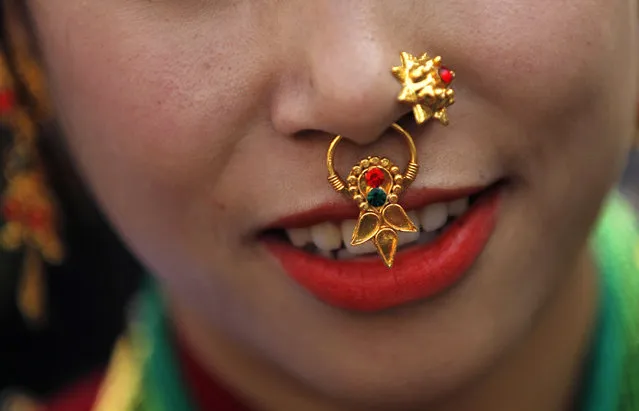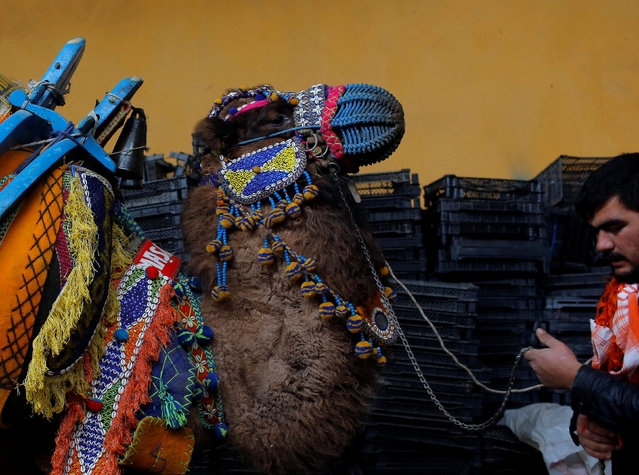
Wrestling camel “Faytoncu” adorned with colourful ornaments is escorted by his groom as he waits for the Camel Beauty Contest ahead of the annual Selcuk-Efes Camel Wrestling Festival in the Aegean town of Selcuk, near Izmir, Turkey, January 14, 2017. (Photo by Murad Sezer/Reuters)
16 Jan 2017 10:14:00,post received
0 comments

